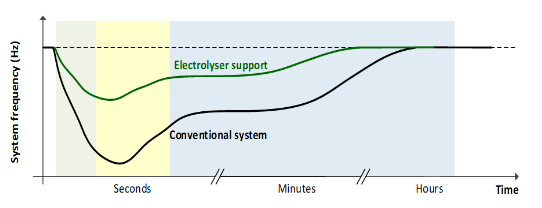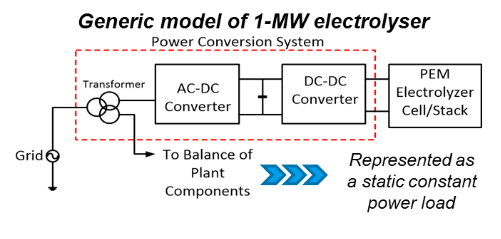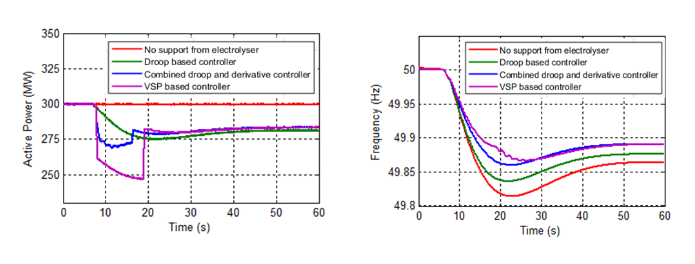5.5.2 Lecture Notes Stability support by power-to-gas conversion
Course subject(s)
5. Multi-carrier Grid Integration
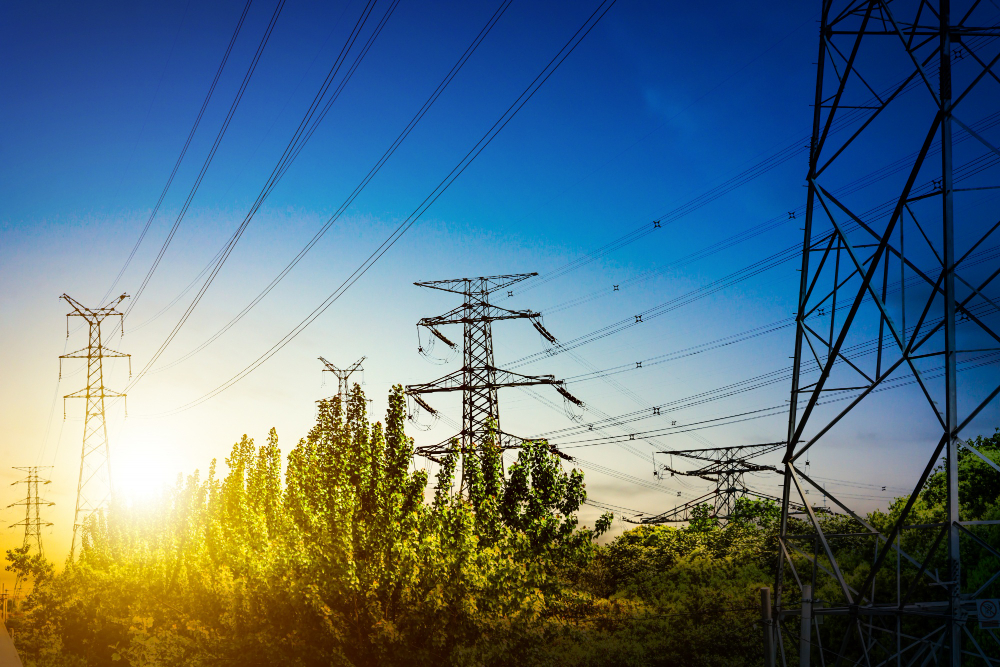
This image is from freepik.
This lecture discusses the stability support by power-to-gas conversion. The following topics will be covered:
- The role of power-to-gas conversion in multicarrier system integration
- A model for an electrolyser
- The different control strategies for power system stability support
The role of power-to-gas conversion
A real-world example of a power-to-gas system can be found in the Netherlands. It is located in the North Sea, and it uses a high deployment of renewables, which are mostly wind farms. This system is used to produce hydrogen, which is produced from water. The conversion is done by an electrolyser.
Electrolysers can be connected to a power system via power electronics. The demand can be adjusted in the time frame of several milliseconds. Therefore, they can help stabilising the power grid in the active power balance. If the system experiences fluctuations or power imbalances, the system can become unstable. Without effective control cascading outages, power disruptions, or blackouts can occur. In the figure below, two frequency responses are shown after a sudden disconnection. It can be seen that the system with electrolysis support is less unstable than the conventional system.
A model for an electrolyser
Before an electrolyser can be integrated into the power system, an accurate model of the electrolyser is needed. A model for an electrolyser is shown in the figure below, and it consists of multiple components.
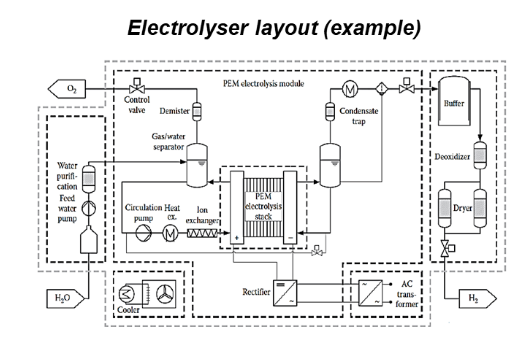
The PEM electrolyser stack (in the middle) is the main component of the electrolyser. In the layout, also power electronics are included, such as a rectifier and a transformer. This model can therefore lead to a model on a higher level that can be used for simulation and analysis. This new model is shown below.
The different control strategies
Another important aspect of the integration is the strategy for the stability support. Since electrolysers are supposed to react fast, these strategies are called special Fast Active Power Regulation (FAPR) strategies. The main goal of FAPR strategies is to mitigate frequency deviations. The strategy acts within a defined time, called the frequency containment period. This ranges from the time frame of milliseconds to several seconds.
In principle, different FAPR strategies are used. Droop control can be adopted for FAPR. In droop control, the deviation in frequency is observed, and it proportionally adjusts the active power of the electrolyser. The adjustment follows from a certain linear slope characteristic.
Another strategy is the combined droop-derivative FAPR. In this strategy there are two parallel loops, such that one loop performs the droop control, and the other loop performs the derivative loop. The derivative loop senses the rate of change in the frequency and performs a fast adjustment of active power. In this way, the combined droop-derivative FAPR adjusts the active power in order to prevent a steep rate of change of frequency, and a large frequency deviation.
The last strategy that will be discussed is the Virtual Synchronous Power FAPR (VSP FAPR). This strategy uses a second order transfer function to quickly adjust the active power consumption of the electrolyser. The goal of this strategy is to prevent steep rate of frequency changes, and large frequency deviations. The VSP FAPR strategy allows the electrolyser to contribute to the damping out of frequency swings.
The discussed strategies can be applied to a 300 MW electrolyser plant (from the real-world example in the beginning). The results are shown in the figure below, and it can be seen that the electrolysers can quickly change their active power response. On the left, the active power of the electrolyser is shown for different strategies. On the right, the frequency of the grid is shown for the different strategies.
Conclusion
This lecture discusses the power support by a power to gas electrolyser system. First, the role and importance of these systems was covered. Then, the model of hydrogen electrolyser was explained, and it was shown how this could be used for a new model. Finally, different strategies were discussed, and it was shown what effects these strategies have on a real-world example.

Technology of Intelligent and Integrated Energy Systems by TU Delft OpenCourseWare is licensed under a Creative Commons Attribution-NonCommercial-ShareAlike 4.0 International License.
Based on a work at https://online-learning.tudelft.nl/courses/technology-of-intelligent-and-integrated-energy-systems/




